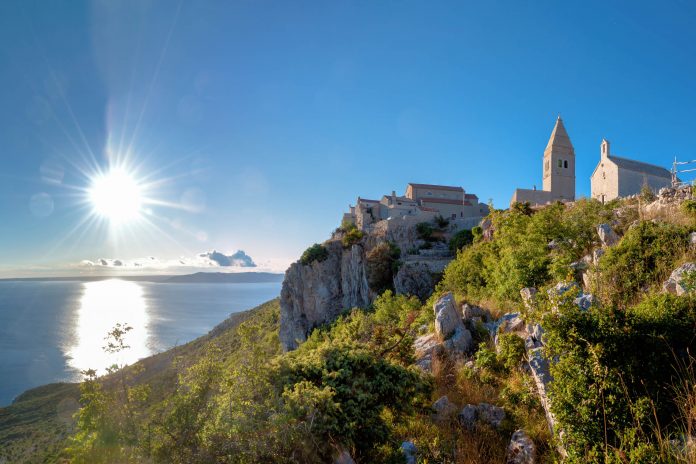Die malerische Insel Cres in der Kvarner Bucht zählt mit ihren naturbelassenen Felsbuchten, einladenden Kiesstränden und zauberhaften mediterranen Fischerdörfern zu den beliebtesten Urlaubszielen von Kroatien.
Gemeinsam mit der benachbarten Insel Krk ist Cres in der Kvarner Bucht bei Istrien die größte Insel der Adria. Das milde Klima und die geschützten Buchten wussten bereits erste Siedler in der Jungsteinzeit zu schätzen, die Kroaten kamen im frühen 7. Jahrhundert nach Cres. Doch auch die Venetier, Habsburger und sogar die Franzosen hinterließen historische Spuren auf dem idyllischen Eiland.
Heute ist die Insel Cres dank unberührter Buchten mit kristallklarem Meer, malerischen Ortschaften und üppigen Wäldern ein Paradies für Aktivurlauber und Erholungsuchende.
Inhaltsverzeichnis
BILDER: Insel Cres
Wie kommt man am besten auf Cres?
Drei Wege führen nach Cres. Für die Anreise mit dem Auto stehen zwei Fähren zur Verfügung, eine von Brestova in Istrien nach Porozina im Norden von Cres, nahe Beli, und eine von Valbiska auf der Insel Krk nach Merag, nahe Cres Stadt.
Fußgänger haben auch die Möglichkeit, den Katamaran von Rijeka zu nutzen, der dreimal pro Woche in Cres Stadt, Martinščica und Mali Lošinj auf der Nachbarinsel Lošinj ankert.
Strände von Cres

An der rund 250km langen Küste von Cres wechseln sich schneeweiße Kiesstrände an der Süd- und Westküste mit naturbelassenen Felsbänken an der Nord- und Ostküste ab. Aufgrund der fehlenden Sandstrände ist das türkisblaue Wasser um Cres glasklar. Im felsigen Untergrund finden verschiedenste Meerestiere ausreichend Verstecke und schaffen ein mediterranes Paradies für Taucher und Schnorchler.
Die schönsten Strände von Cres zu benennen ist schwierig, jede einzelne Bucht hat ihre eigenen Vorzüge. Unbedingt sehenswert sind der kleine Strand unterhalb von Lubenice, der bereits zu den schönsten der Welt gewählt wurde, die Felsbänke von Valun mit dem klarsten Meerwasser Kroatiens, und der kilometerlange Kiesstrand von Martinščica, die alle zu unseren 10 schönsten Stränden Kroatiens zählen.
Sehenswürdigkeiten von Cres
Wer von Norden kommt, wird gleich vom Gorice, dem mit 648m höchsten Berg von Cres begrüßt. Er liegt direkt an der Abzweigung nach Beli, ein idyllisches mediterranes Dorf, das einst dem ungarischen König Bela IV. als Zufluchtsort vor den Tartaren diente.
Cres Stadt
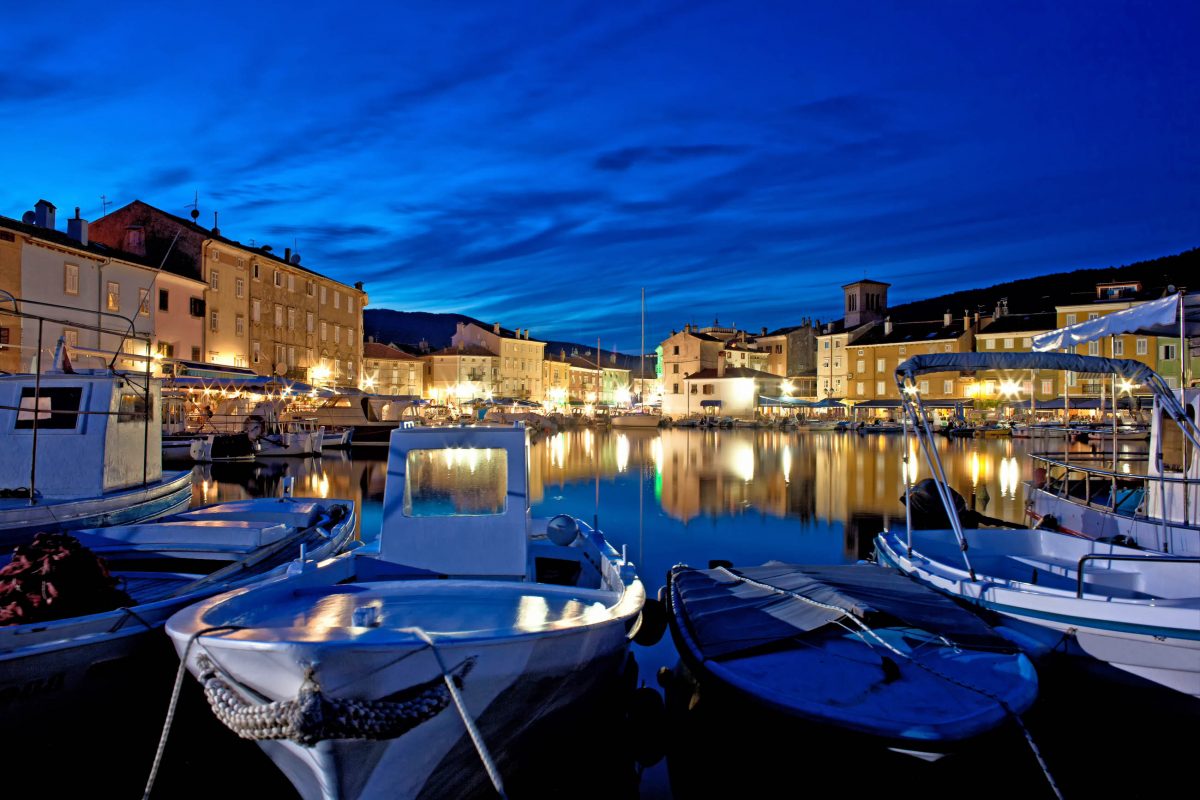
In der Hauptstadt von Cres leben mit 3000 Menschen etwa 90% der Inseleinwohner. Das schmucke Städtchen zählt mit seiner historischen Altstadt, seinen idyllischen Kiesstränden, den modernen Hotels und gemütlichen Tavernen zu den beliebtesten Urlaubszielen in der Kvarner Bucht. Die Marina von Cres Stadt wurde mit der Blauen Flagge ausgezeichnet und ist mit ihren eindrucksvollen Jachten eine Sehenswürdigkeit für sich.
Valun

Valun befindet sich in derselben Bucht wie Cres Stadt und gehört eindeutig zu den sehenswertesten Orten der Insel. Die 80-Seelen-Gemeinde ist das ideale Ferienziel für Reisende, die im Urlaub auf der Suche nach Ruhe und Entspannung sind. Die Fels- und Kiesstrände des autofreien Valun verfügen über das klarste Wasser Kroatiens und die bewaldeten Hügel rund um den beschaulichen Ort laden zum Wandern und Radfahren ein.
Lubenice
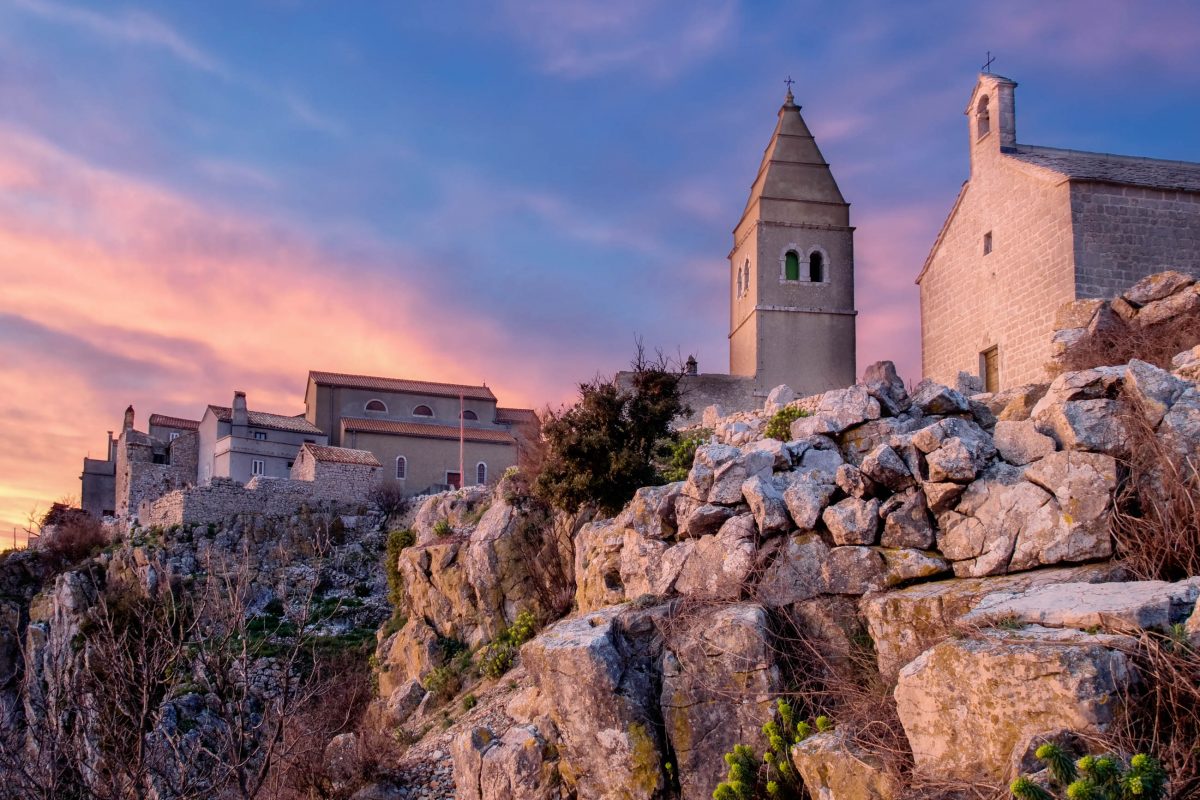
Lubenice wird oft als bezauberndster Ort von Cres bezeichnet. Auf seiner steilen Klippe lockt die winzige Siedlung nicht mit historischen Bauten oder Badestränden, sondern mit märchenhafter Idylle wie aus dem vorigen Jahrhundert und einem spektakulären Blick auf die Adria.
Vrana-See (Vransko Jezero)
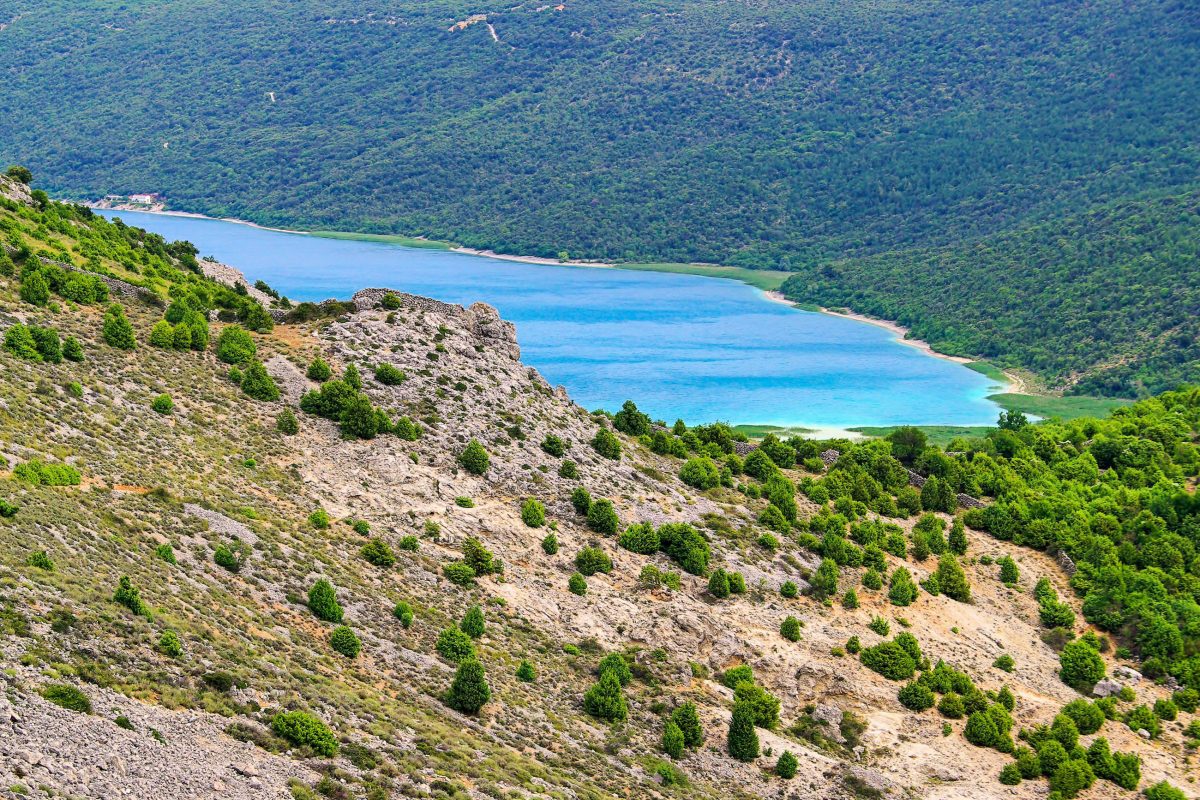
Der Vrana-See auf Cres ist ein Naturphänomen für sich. Mit einer Tiefe von 74 Metern liegt seine Wasseroberfläche über und seine tiefste Stelle unter dem Meeresspiegel. Der „Krähen-See“ versorgt die gesamte Insel mit Trinkwasser und darf aus diesem Grund leider nur aus der Ferne betrachtet werden. Wanderungen zum Vrana-See starten am besten in Martinščica, Lubenice oder Valun.
Übrigens: Der Vrana-See ist auch als größter See Kroatiens bekannt. Dies ist allerdings ein anderer See, der sich in Mitteldalmatien zwischen Zadar und Šibenik am kroatischen Festland befindet.
Blaue Grotte
Die Blaue Grotte von Cres liegt in der Bucht von Zanja und beeindruckt durch ihre herrlichen Farbspiele, die das Sonnenlicht auf das türkisblaue Wasser zaubert. Das kristallklare Meer offenbart Tauchern und Schnorchlern die kroatische Unterwasserwelt in ihrer ganzen Pracht. Zu erreichen ist die Blaue Grotte mit dem Boot oder auf Wanderungen von Martinščica oder Lubenice aus.
Martinščica

Martinščica, nach Cres Stadt der zweitgrößte Ort von Cres, lockt Touristen in erster Linie mit seinem herrlichen, kilometerlangen Kieselstrand zu entspanntem Badeurlaub. Sein ruhiges Wasser und flacher Grund eignen sich ideal für Familien mit kleinen Kindern und seine hervorragende Wasserqualität wird regelmäßig mit der Blauen Flagge ausgezeichnet. Der herrliche Strand steht auf der Liste unserer 10 schönsten Strände Kroatiens.
Osor
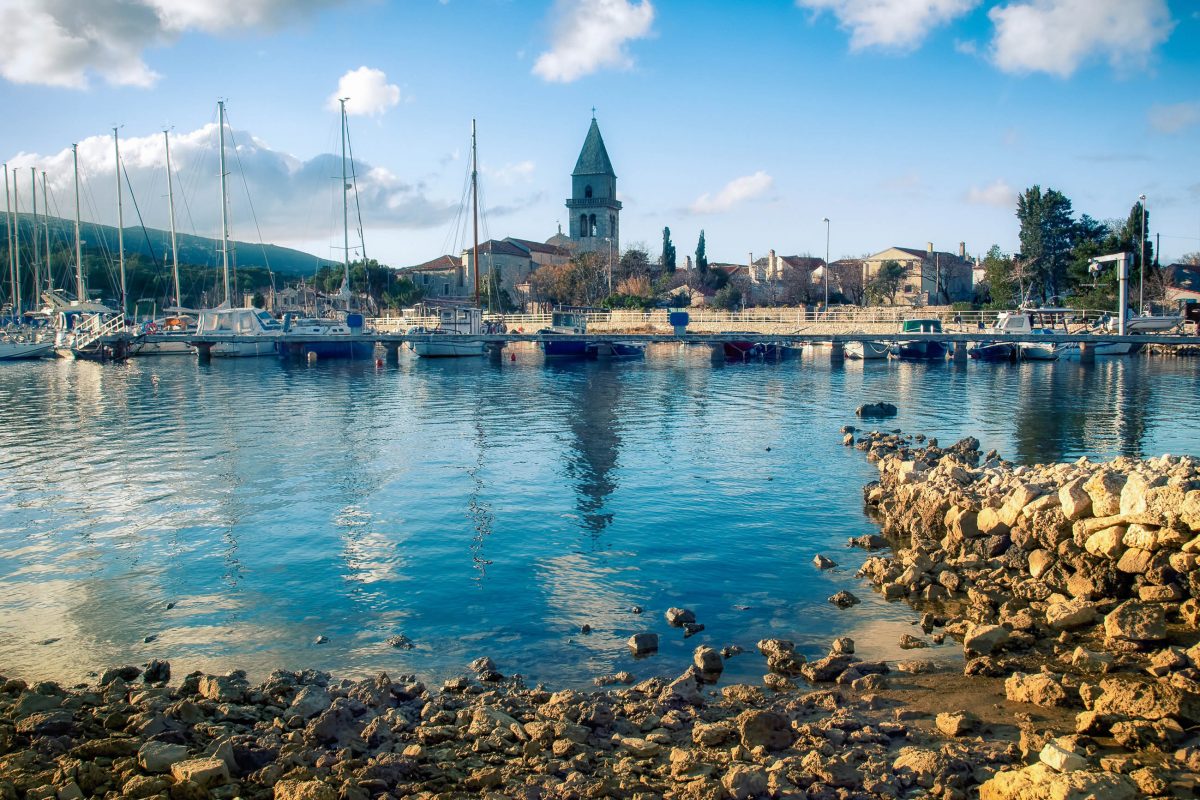
Die Museumsstadt Osor ist der kulturelle Mittelpunkt von Cres. In der Antike war die Verbindung zwischen Cres und Lošinj ein wichtiger Seehafen, an dem sich Reisende aus aller Welt trafen. Historische Gebäude, Museen, eine Galerie und zahlreichen Skulpturen prägen das Stadtbild und erinnern in der heute beschaulichen Siedlung noch an den Glanz von damals.
Brücke nach Lošinj

Die Inseln Cres und Lošinj waren einst eine gemeinsame Landmasse. Den Kavada-Kanal bei Osor schufen vor rund 2000 Jahren die Römer, deren Hauptverkehrsmittel in der Antike das Schiff war. Von Cres nach Lošinj führt heute eine rund 10m lange Brücke, die zweimal täglich, um 9 und um 17 Uhr, geöffnet wird, um Schiffe passieren zu lassen.

